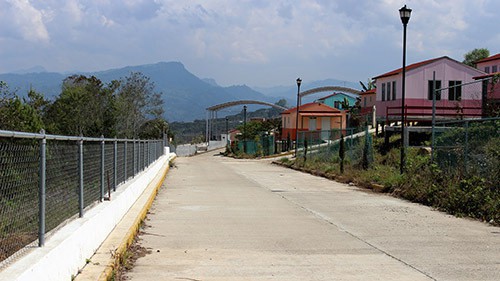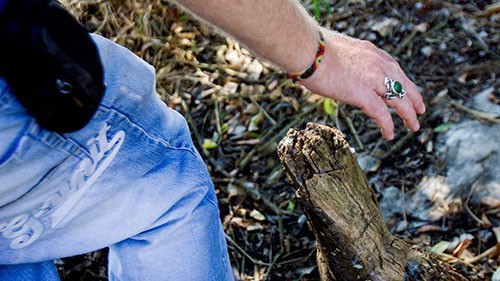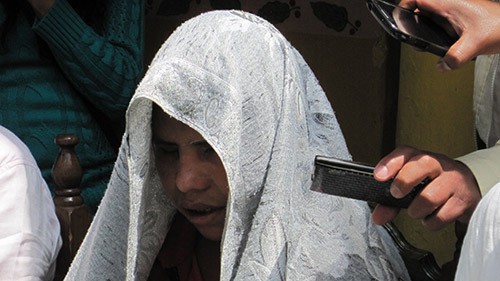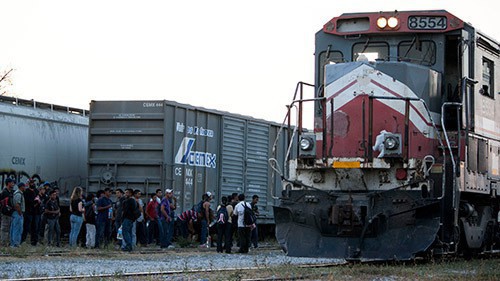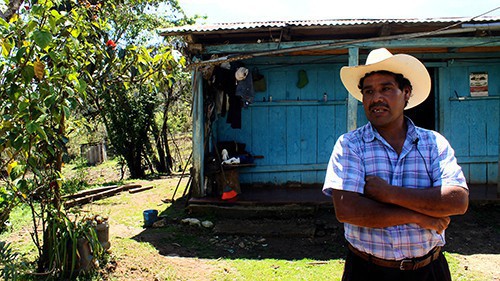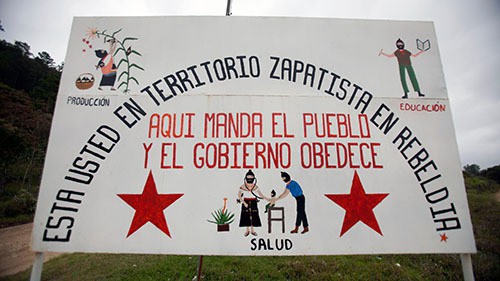
Chiapas women work toward a ‘life free of violence’
By Laurie Liles / Cronkite Borderlands Project
Published Sept. 25, 2014
SAN CRISTÓBAL DE LAS CASAS, Mexico – When a pending downpour forced Lesvia Entzin Gomez to return to her mother-in-law’s without the apples she had left to cut, her drunken, enraged husband pulled out a shotgun.
“I did not think he had a shell in the shotgun,” Entzin Gomez recalled. “I thought he was playing … then he pointed it at me and I heard it go off. He shot me in the face and my eyes.”
The July 15, 2013, attack left the 24-year-old mother of three blind and suffering from headaches and dizziness. Her husband, Jorge Navarro Hernandez, remains in jail, but she said she has been threatened by his relatives and is in constant fear for her life.
Her case is not unusual: 30 percent of women in Chiapas state age 15 and older were victims of domestic violence in 2011, according to Mexico’s most-recent National Survey on the Dynamics of Relationships in the Household.
And while that seems shockingly high, Chiapas actually has the lowest domestic violence rate among Mexico’s 31 states and federal district. The state of Mexico was highest at 56.9 percent. Nationally, 46.1 percent of Mexico’s 42.6 million women reported physical, emotional or psychological abuse in the 2011 survey.
In Chiapas, where more than 70 percent live in poverty, activists say gender-based violence resulted in the deaths of 84 women from January to October 2013. Entzin Gomez narrowly missed becoming one of those statistics.
Telling her story
She told her story at a news conference nearly eight months after she was shot. Entzin Gomez kept her eyes downcast and her face partially shrouded beneath a gray woven shawl. Her scars were still visible and she moved slowly with the aid of a companion.
She was flanked by two members of Mexico President Enrique Peña Nieto’s Executive Commission for Victims, who said they planned to take Entzin Gomez to Mexico City for medical treatment. But Entzin Gomez said she needed food and a safe place to live with her children.
“Right now we are suffering. We are eating just a little beans and corn,” she said.
State and local officials have failed Entzin Gomez and her family, said Dr. Julio Barros Hernandez, one of the commissioners at the news conference.
“In this case, they have left Lesvia totally defenseless, depriving her of the essential rights that allow one to live with dignity,” he said.
The other commissioner, Jaime del Rincon Rochin, said her plight is all too common.
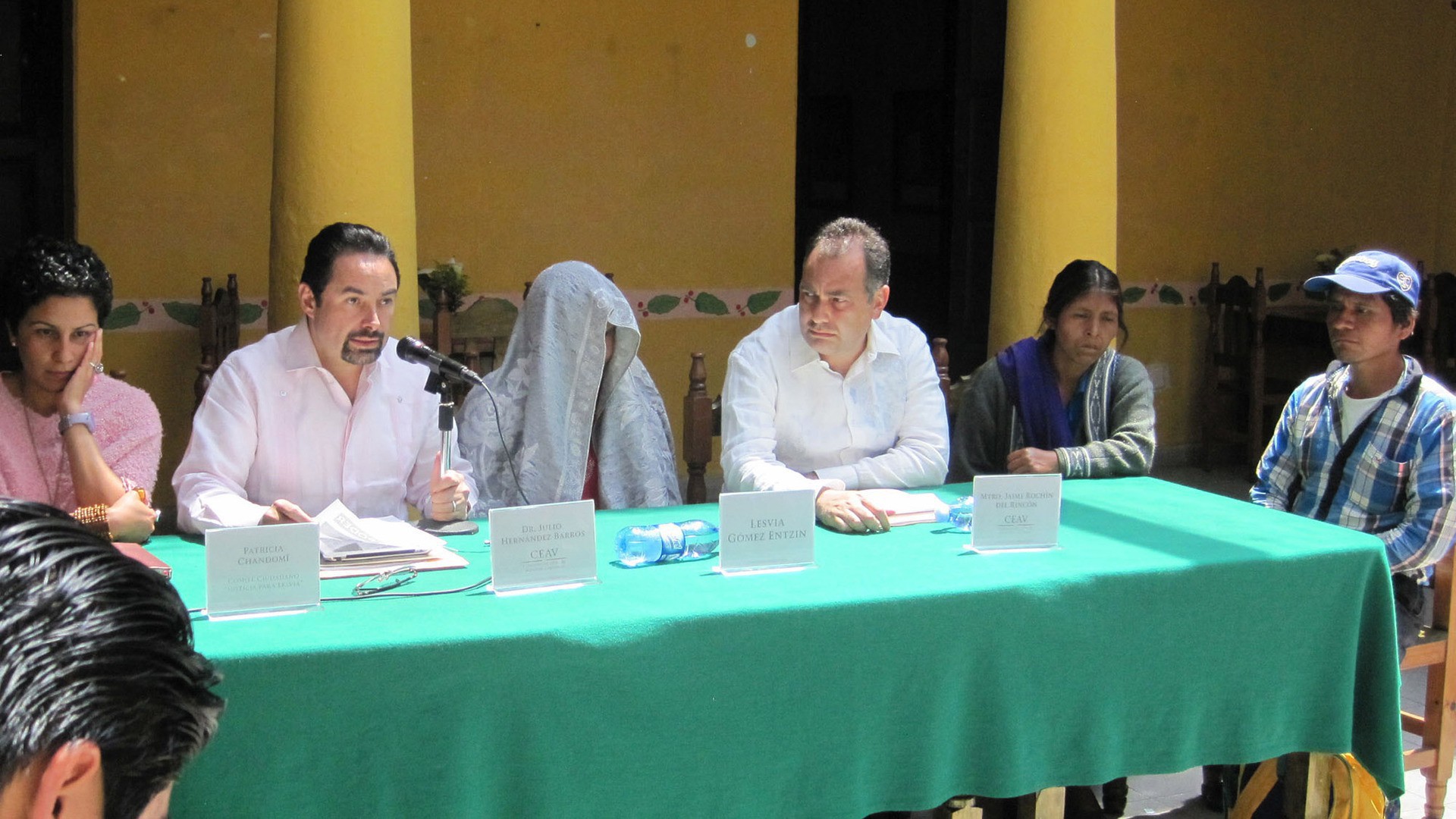
“Lesvia is a painful example of the state in which many women are left when they survive an attack of femicide,” del Rincon Rochin said. “What Lesvia is living through today is what many women live through in many parts of this country, and we cannot permit that this keeps happening.”
Femicide – the act of killing a woman because of her gender – is a federal offense in Mexico, punishable by 40 to 60 years in prison, according to the U.S. State Department’s Mexico 2013 Human Rights Report.
Twenty-eight states, including Chiapas and the federal district, have criminalized femicide and domestic abuse, but problems persist.
According to a 2012 report published by the Mexico Secretary of Governance, the number of female homicide victims increased dramatically over the previous three years, particularly in the federal district and eight states, including Chiapas.
And domestic abuse rates may be understated. Domestic violence victims from rural and indigenous communities often do not report abuse, said the State Department report, for fear of reprisal, of the stigma associated with domestic violence or because they may belong to communities where abuse is accepted.
As a result, the report said no authoritative government statistics are available on the number of abusers prosecuted, convicted or punished.
In Chiapas, the fight against domestic violence and for equal treatment has been going on longer than in most states in Mexico.
A revolutionary notion
When indigenous rebels known as the EZLN – the Zapatistas – rebelled against the Mexican government on Jan. 1, 1994, the leftist group unveiled a Women’s Revolutionary Law as a key feature of their manifesto, the First Declaration of the Lacandon Jungle. It’s essentially a 10-article bill of rights for indigenous women.
The articles declare that women have a right to participate in the political system and hold leadership posts; to decide whom to marry and how many children to bear; to a fair wage and quality health care; and to a life free from sexual and domestic violence.
First: Women, regardless of their race, creed, color or political affiliation, have
the right to participate in the revolutionary struggle in a way determined by their desire and capacity.
Second: Women have the right to work and receive a just salary.
Third: Women have the right to decide the number of children they will have and
Fourth: Women have the right to participate in the affairs of the community and
hold positions of authority if they are freely and democratically elected.
Fifth: Women and their children have the right to primary attention in matters of
health and nutrition.
Sixth: Women have the right to an education.
Seventh: Women have the right to choose their partner, and are not to be forced
Eighth: Women shall not be beaten or physically mistreated by their family
members or by strangers. Rape and attempted rape will be severely punished.
Ninth: Women will be able to occupy positions of leadership in the organization
and hold military ranks in the revolutionary armed forces.
Tenth: Women will have all the rights and obligations elaborated in the
Revolutionary Laws and regulations.
Source: Rodriguez, Victoria. Women’s Participation in Mexican Political Life. Boulder,
CO: Westview Press, 1998.
Author and researcher Hilary Klein said that to appreciate what has changed since the Zapatista rebellion you must first understand how cruel life was for indigenous women 30 years ago.
“Women lived in extremely oppressive situations where, in the public sphere and the private sphere, there was an extraordinary level of domestic violence and alcohol abuse,” said Klein, who lived and worked with Zapatista women from 1997 to 2003.
Klein’s book, “Compañeras: Zapatista Women’s Stories,” slated for release in January, documents what she calls the “seismic” transformation women in Zapatista territory experienced before, during and after the 1994 EZLN uprising.
Before the Zapatistas, Klein said, women had no control over their lives.
“They basically had to ask their husbands or their fathers for permission to leave the house,” she said. “They were married very young and had children throughout their reproductive years.”
As the Zapatistas began to mobilize in the 1980s, Roman Catholic Church leaders inspired by liberation theology influenced the movement, Klein said. Bishop Samuel Ruiz Garcia of the Diocese of San Cristobal de las Casas urged better treatment of women as he helped organize indigenous communities.
“As these leaders were saying, ‘It’s not OK for women to be treated this way,’ there was a simultaneous push from the women themselves, who said they wanted things to change,” Klein said.
She said the Zapatistas emphasized women’s involvement as a way to grow their movement. EZLN leaders “pushed from the beginning that women can participate at all levels of the organization, and that has been their driving strategy to make changes around women’s rights,” Klein said.
The Zapatista attack on San Cristóbal de las Casas in 1994 was planned and led by Comandanta Ana Maria. Nearly 30 percent of insurgents were women, and Comandanta Ramona was the sole Zapatista representative at the First National Indian Congress in Mexico City in 1995.
In the years leading up to the rebellion, EZLN activist Susana traveled to dozens of villages throughout Chiapas, collecting suggestions from thousands of indigenous women, according to Klein and other Zapatista historians. Their ideas were ultimately incorporated into the Women’s Revolutionary Law.
“No event has been more important for the women’s movement in Chiapas than the public appearance of the EZLN in 1994,” author and Professor R. Aida Hernandez Castillo wrote in “Contemporary Women’s Movements in Chiapas.” Hernandez Castillo said the Zapatista movement and the Women’s Revolutionary Law were catalysts, prompting indigenous women throughout Mexico to organize.
The movement stalls
But Klein and local women’s leaders say the explosive period of female empowerment of the 1990s has plateaued in recent years.
Human-rights activists’ frustration was evident March 8 at an International Women’s Day news conference and protest rally that drew about 200 near the base of the large Mayan cross facing the Cathedral of San Cristóbal de Las Casas.
Organizers said the federal and state governments have failed to protect Chiapas women from domestic violence and femicide.

“Violence in Chiapas is extreme,” said Center for Women’s Rights leader Alma Padilla Garcia in an interview. “All forms of violence, poverty, hunger, all can be considered violence against women. We give responsibility for this violence to the state of Mexico.”
Federal and state officials in December launched a domestic-violence prevention program that Chiapas Attorney General Raciel Lopez Salazar says has reduced the number of femicides and crimes committed against women.
In a March 8 statement, the attorney general’s office announced a 78 percent decrease in femicide during the first quarter of 2014 compared with the same period in 2013, from nine cases to two. It attributed the reduction to a new program, the Emerging Action Plan for the Prevention and Treatment of Femicide and Gender Violence. The office also said crimes against women declined by 58 percent during the same period.
Coordinated by Mexico’s Secretary of Governance, the Ministry for Development and Empowerment of Women and the Chiapas attorney general’s office, the initiative includes domestic-violence prevention workshops, media education, law-enforcement training and a 24-hour, toll-free domestic-abuse hotline.
Despite such initiatives, human-rights leaders say complex economic and social challenges continue to thwart progress and threaten women’s safety.
Longtime women’s rights activist Mercedes Bustamante Olivera, a founder of the Center for Research and Action for Latin Women, said women in Chiapas suffer under a “structure of violence” and male oppression.
“Because the capitalist system is organized on the basis of male parameters,” she said, “men are aggressive toward women.”
Discrimination against women leads to violence in family and personal relationships that leave women defenseless, Bustamante Olivera said. In order for change to occur, she said women must lead.
“Far from being victims, we take action,” she said.
Women lead the fight
A growing number of indigenous women in Chiapas are taking action. Pascuala Perez Gutierrez and Margarita Vasquez Boloma work with the Fray Pedro de la Nada Committee for Human Rights, an organization founded shortly after the 1994 uprising to train indigenous people about their fundamental rights.
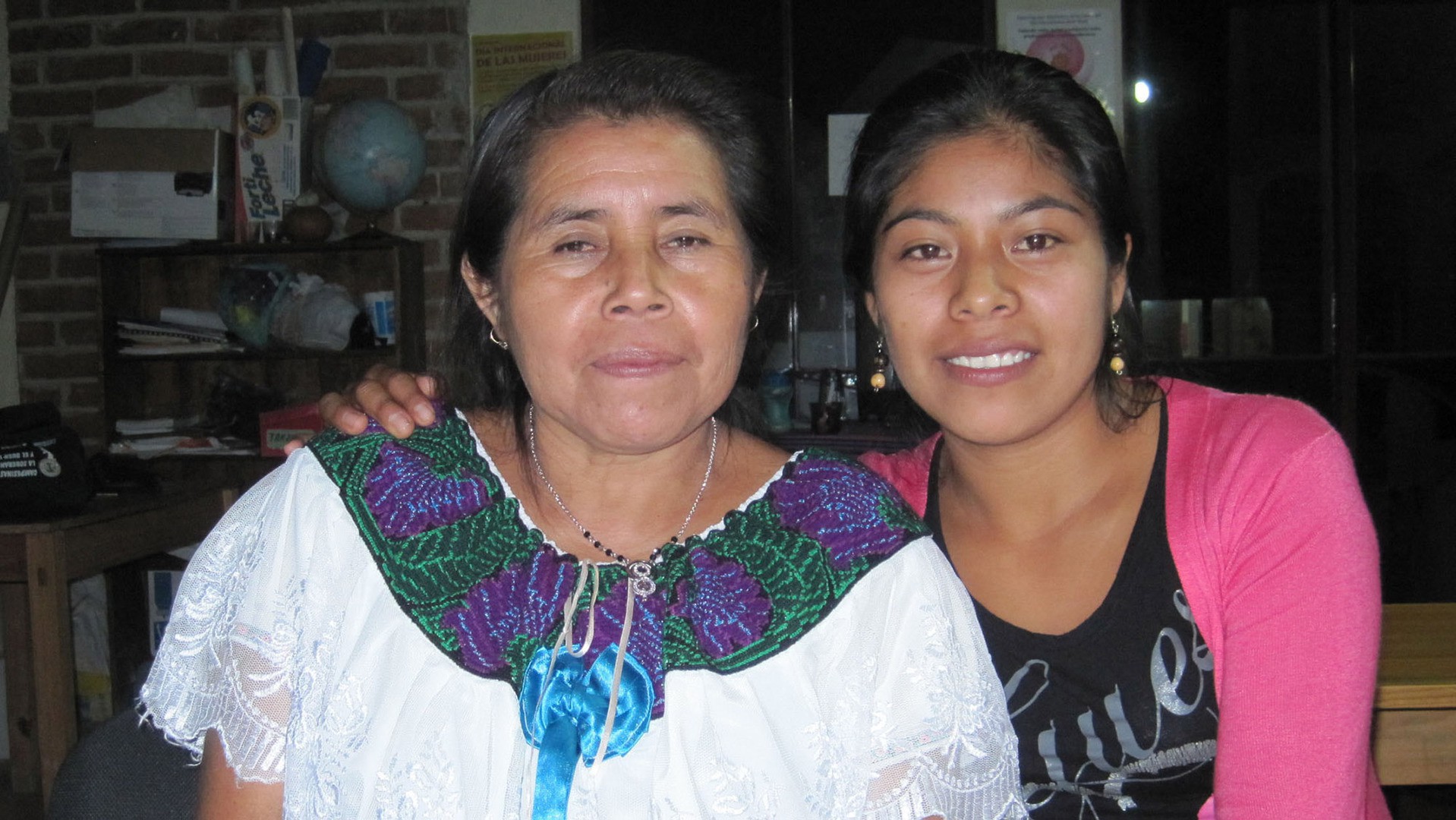
Perez Gutierrez, 49, said after the violence and repression that led to the Zapatista rebellion, she and other indigenous women responded by organizing and educating themselves about their rights.
“Through this process, we found the need to participate,” she said in an interview at the Center for Research and Action for Latin Women. “There were no spaces for women, so we found the need to organize, to participate, and to be valued as women.”
Vasquez Boloma, 19, grew up in the Zapatista community of Nueva Jeruselen. She is a trainer with Fray Pedro, educating women and men in workshops as part of a 14-month gender-equality education program.
She said violence against women is widespread. But through training, women are learning to defend themselves.
“Violence comes from everywhere … there isn’t a space where you can say there is no violence,” Vasquez Boloma said. “In the house, in the streets, everywhere there is violence. Now that we’re receiving workshops, we’re going to defend ourselves.”
Perez Gutierrez and Vasquez Boloma said men have mixed reactions to women receiving this training. Some are hostile to the idea of women defending themselves.
“They don’t like it,” Perez Gutierrez said. “They think especially the promoters, they’re going to put bad ideas in the heads of women. There’s even threats because they don’t feel that it’s right for the women to defend themselves.”
Vasquez Boloma sees the same reaction in her community.
“When they hold a workshop and a woman speaks, the men don’t respect her,” she said. “Some men think that only men should decide.”
Others have come around to the idea.
“Some men have received training and they support us,” Vasquez Boloma said. “So things are getting better with men, too.”
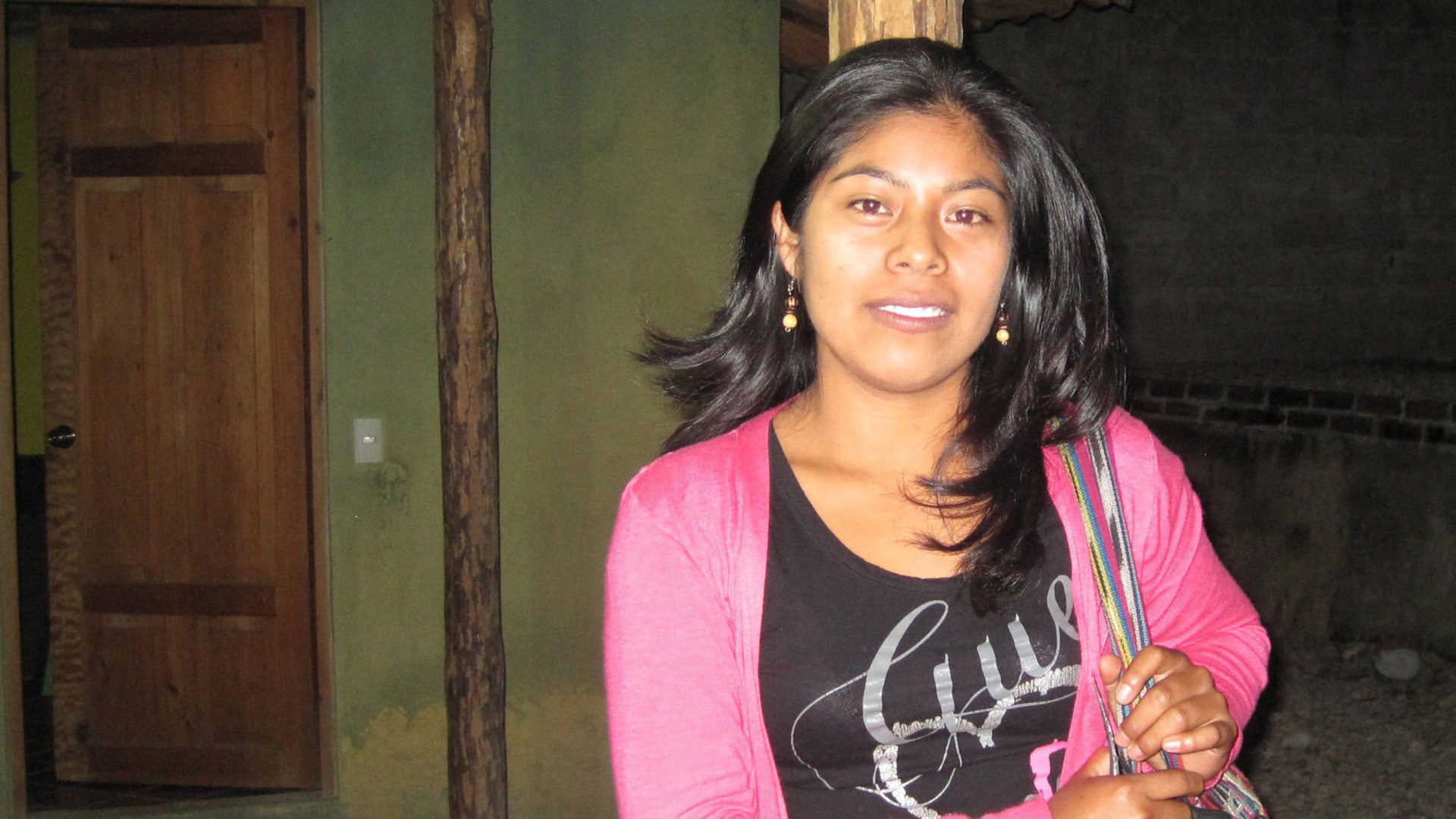
Perez Gutierrez said she’s seen progress in the 21 years she’s been fighting for women in Chiapas. The Women’s Revolutionary Law helped liberate women, she said.
“I don’t have to ask anybody for permission,” she said. “Nobody asks me, ‘Where are you going?’ I make my own decision to leave or to go. I think that’s change.”
Both women look to future generations to continue the struggle for women’s rights in Chiapas.
If she has a daughter someday, Vasquez Boloma envisions for her a dignified life and a tranquil state of mind. Beyond that, she said she has only one wish.
“That she would live free of violence.”

